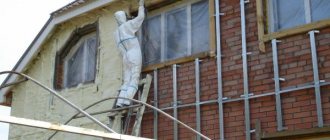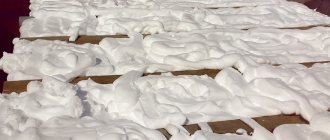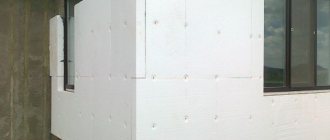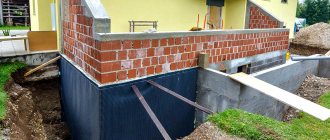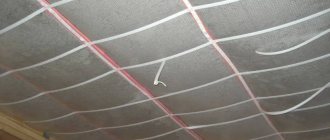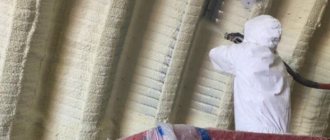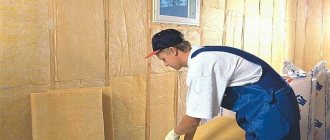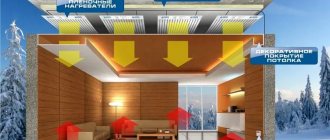Creating walls from foam means quickly, cheaply and effectively providing thermal insulation for your home. Modern manufacturers allow you to use either ready-made foam panels or spray foam from a special spray bottle or can onto the surface. Let's consider the main pros and cons of the methods, what types of materials are used for this today, on what surfaces and how they can be applied, as well as how to use these technologies with your own hands and what is required for this.
External house insulation PPU Source ppuspb.ru
Pros and cons of using foam
Before deciding to insulate the walls of your house with foam, you need to consider all the advantages and disadvantages of the method. Among the positive features are the following:
- High speed of application, ability to process large surfaces in one approach.
- High resistance of the material to biological factors - insects, mold, fungi, putrefactive bacteria.
- Insulation with pressurized foam from a special sprayer allows you to fill all the smallest cavities and create a seamless coating with a high level of thermal insulation.
- When hardened, the foam composition has a very low specific gravity and therefore does not increase the load on the load-bearing structures of the building.
- The application technology eliminates the use of special fasteners - it simply sticks when sprayed onto the surface.
- The compounds in cured foam are completely safe and non-toxic.
Applying foam from inside a frame house Source ast75.ru
- Simple installation procedure.
- Increased sound insulation of insulated surfaces.
- Contact of foam with pipes, frame elements, roofing sheets and other metal products does not cause a destruction reaction of the latter, but, on the contrary, creates effective anti-corrosion protection.
- Refractory material, does not support active combustion.
But we must take into account some of the disadvantages of foam insulation:
- The total cost of thermal insulation with foam is at least 2 times more expensive than using conventional thermal insulation materials.
- Destruction of the structure due to prolonged contact with water, high air humidity and exposure to direct rays of the sun.
- Insulating a roof with foam, as well as walls, and any other surface of a large area, will require the use of high-performance equipment, which involves additional costs.
- The worker performing the spraying must wear a personal protective suit.
Important! Foam is one of the modern insulation materials that allows you to reliably insulate a house quickly and without additional costs. However, one of the significant disadvantages of a foamed surface is the violation of vapor permeability. Therefore, both inside the building itself and in the insulated elements, it is necessary to provide in advance an effective ventilation and vent system.
Using a protective suit during spraying Source ppuspb.ru
See also: Catalog of companies that specialize in home insulation
Is penoizol harmful to health?
After testing, Russian manufacturers were convinced of the safety of using penoizol. There are certificates confirming this. But polystyrene foam is prohibited in Canada and is not used in the USA as insulation. In the UK, safety guidelines are followed regarding the use of urea foam as a toxic substance. The problem lies in the concentration of formaldehyde, which is released during polymerization. At high concentrations in the air it causes allergies and tumors in the future
Therefore, it is very important to use high-quality materials and adherence to pouring technology. In high-quality products and in the hands of craftsmen, the minimum content of formaldehyde is safe
Types of materials
Foam insulation for walls exists in the following main modifications:
- Penoizol.
Foaming components based on aldehydes and urea polymers. Complete hardening time is about 3 days. Available both in aerosol cans for spraying and in the form of ready-made slabs or granules. It is used for filling cavities when insulating floors, ceilings and walls.
- Polyurethane foam.
PPU is a two-component insulation foam. Immediately before use, the ingredients are mixed into one mixture. This is the most commonly used universal foam material. When the filler is formed, a mass with closed air voids is formed 40 times greater than the original volume.
Polyurethane foam does not absorb moisture, exhibits good adhesion to any materials and is not affected by rodents. Can be used for both external and internal application.
Application of polyurethane foam Source zbbr.ru
- Polyurethane foam.
Based on a modification of polyurethane. Increases in volume from the original by 20 times. It is used from cans for sealing small cavities - when installing windows, doors, pipes, seams, etc.
- Foam concrete.
It is used for pouring and thermal insulation of foundations and reinforced concrete floors. Insulating walls with foam based on concrete mortar is not recommended due to its significant mass and the resulting excessive load on load-bearing structures. Available in both liquid and ready-made block form.
Recommendation! PPU roof insulation creates a reliable heat-insulating coating with little load on the frame. The foam has high adhesion and is applied directly to the inner surface of roofing sheets. At the same time, sufficient thermal insulation can be achieved with a layer of only 5-7 cm.
Roof insulation from the inside using polyurethane foam Source ppuspb.ru
Waterproofing
Polyurethane foam is also used for waterproofing. It increases in volume under the influence of moisture and hardens within 24 hours.
Polyurethane foam with waterproofing properties is sold in cans. It is endowed with high waterproofing and fixing properties. It is used for both external and internal work.
This universal material is not afraid of water and high humidity, so it is widely used in everyday life.
Area of use, recommendations for selection
Construction foam is a universal insulation material. However, due to some differences in the properties of various compositions, it is better to use a specific variety in one case or another. For this there are the following series of recommendations:
- Cracks, defects, and cavities during the installation of windows and doors are sealed with polyurethane. In this case, the frozen material must be protected from direct sunlight.
- Filling the large inter-wall volume of frame structures is carried out using penoizol. Used both externally and internally to form an insulating seal in walls and floors between sheathing sheets.
- Elimination of small-sized irregularities, cracks, seams, and cavities is done using polyurethane foam. For example, when installing solid insulating panels, arranging a foundation, installing windows.
Sealing defects with polyurethane foam Source yandex.net
Polyurethane liquid foam for insulating walls, attics, roofs, and basements creates reliable protection with good waterproofing performance. Spraying is carried out using special equipment. However, if the volume of similar work is small, then it is quite acceptable to use polyurethane foam from cylinders.
Which variety to choose
In many ways, the choice will depend on the specific situation and what area needs to be treated. Using an example, we can consider the most common cases when a house needs foam insulation:
- If you need to seal cracks or eliminate any other defects on the surface, then polyurethane is suitable. But such material should not be exposed to sunlight.
- If you need to fill a large volume, then penoizol is suitable. But an ordinary cylinder will not be enough; you will need to purchase a special device with high pressure. You don’t have to buy it at all - you can rent it or borrow it from friends, because no one will use it often.
- If you need to seal small cracks and carry out thermal insulation in small areas, you can buy a cylinder with regular polyurethane foam. It does not support combustion, after hardening it is particularly hard, and it has an ecological composition.
- If defects are found on the outside of the wall, then you need to apply a composition based on polyurethane. It is applied directly using a special cylinder or apparatus.
It is worth remembering that foam insulation creates errors inside the layer that need to be eliminated. To do this, you will need a long hose to push the material inside. If it is necessary to fill air gaps inside the insulation, then holes are made in the wall with something sharp.
Polyurethane foam is not suitable for insulating the entire external facade - it does not have the appropriate characteristics necessary for this. Therefore, you should not choose it for these purposes, even despite its more economical cost.
Methods for insulating a main wall
Foam for walls is used to insulate structures in two variations:
- Outside.
- From the inside.
- Combined.
In the first case, the wall material is reliably protected from external atmospheric manifestations. In this case, the zone of condensation formation is shifted into the insulating mass, and not into the wall structure. Therefore, it is reliably protected from destruction under the influence of dampness - rotting and expansion of ice when freezing. In this way, a balance is maintained - heat is retained in the house and the durability of the structure is ensured.
When houses are insulated with foam from the inside, the point of condensation formation moves directly into the wall material. Despite maintaining heat in the room, the material will always be damp. Therefore, in summer it will be susceptible to rotting, and in winter it will be subject to destruction due to expansion during freezing of water.
Application
After about 30 cm, stop and see what layer of foam forms. If necessary, apply a little more foam on top of the first layer.
Over time, you will develop an understanding of the optimal amount of solution to spray.
But for pouring, it will be very problematic to correctly distribute the foam evenly throughout the entire space. The fact is that, in theory, you should first pour in the liquid, and then it, expanding, gradually becomes foam.
But the catch is that it is almost impossible to perform this procedure, since you cannot see what is happening inside. That is why it is recommended to install the hose in such a position that it points straight down, and then start pouring. So, the liquid will first fill all the cracks and niches from below, after which, expanding, it will move upward.
Do-it-yourself insulation
To make high-quality thermal insulation of a house with foam, while ensuring the safety of the wall material with a guarantee, only a real professional team can do. For those who decide to perform the procedure themselves, we can recommend the following instructions:
- The sheathing is screwed or nailed to the outer sides of the house wall. The slats, 2-3 cm thick and 7-10 cm high, are mounted edge-to-plane. Horizontal and vertical crossbars should form hollow cells with dimensions of 0.5 by 0.5 meters.
- Before starting work, the user puts on a protective suit, gloves, goggles, and a respirator.
Insulation of walls with polyurethane foam Source stroy-podskazka.ru
- The spraying equipment is brought into readiness, the container is filled (foam for wall insulation in cylinders is connected to the gun), its serviceability and performance are checked.
- The cavities of the sheathing are filled from edge to center with foam, taking into account its subsequent expansion - in full accordance with the instructions from the manufacturer.
- Upon completion of the work, the material is given time to completely harden.
- The frozen mass is leveled and finished with panels, sheet materials or plaster.
It is important to know! The choice of modification and foam manufacturer depends on the preferences, conditions of use and financial capabilities of the individual user. For example, you can simply foam the walls of your house with polyurethane foam. However, before starting work, it is recommended to find out as much information as possible about the composition used - from the seller, on the manufacturer’s website, in reviews, from craftsmen. It is better to give preference to a more reliable, safe and high-quality composition.
Is it possible to increase sound insulation in this way?
The foam has sound insulation properties. This is affected by:
- The thickness of the applied insulation layer reflects the incoming noise.
- Elasticity absorbs vibration from sounds.
- The tightness of seams and cracks prevents noise from penetrating into the room.
But the foam in the cylinders does not have the same characteristics as the material sprayed through the equipment.
The only type of foam in cylinders that has good performance is MAXFORTE SoundFLEX.
Today, foam is widely used to insulate walls indoors and outdoors. It is used in attics and basements, attics and loggias. Insulation of pipelines and chimneys is carried out.
The material has many positive aspects and has good sound insulation properties. When using insulation, you should familiarize yourself with the application method and also think about the cladding.
Briefly about the main thing
Insulating a house with foam has the following number of advantages:
- No load on structures.
- Seamless and hermetic filling of cavities.
- Biological resistance.
- Fire safety.
- Harmlessness.
- Creation of anti-corrosion protection for metal elements.
- Simple application procedure.
Disadvantages - high cost, low water resistance and sun protection, the need to use a protective kit during spraying. The most common types of foam insulation are penoizol, polyurethane foam, polyurethane foam and foam concrete.
The materials can be used both in liquid form and in the form of finished panels and blocks. The main purpose is to seal cracks and cavities, fill frame walls, insulate roofs, basements, floors, and facades. Thermal insulation can be done independently according to the instructions, but it is better to entrust the procedure to professionals.
Conclusion
Foam insulation can be used for walls made of various materials, including aerated concrete, blocks and reinforced concrete panels. Therefore, they are used for insulation of private cottages and apartments. Before giving preference to any one type of foam, consult a specialist.
If you have decided to insulate your house with liquid foam, this is the right intention. Always try to buy raw materials from the best domestic and foreign manufacturers. This way you will be able to avoid premature wear of structures.
How to insulate? Instructions
Spraying
There are several principles of insulation using do-it-yourself sealant. These methods are suitable for insulating walls, floors, facades, etc.
Let us highlight two basic principles and consider them in detail:
First way
The first and most common insulation technology produced using polyurethane foam is spraying.
As the name suggests, this is the process of distributing polyurethane foam over a surface using a sprayer.
The sealant instantly connects to the base on which it is applied, creating an even layer that covers the insulated area.
This allows for insulation to be carried out quickly and, importantly, does not require leveling the walls before spraying. The remaining material is simply cut off.
Second way
Filling Filling
. This technology is most often used in the construction process, when the structure of the building being constructed includes voids that must be filled with an insulating substance.
However, the application of this insulation principle is also possible with a fully erected structure, however, in this case it is necessary to have technological holes through which foam will be supplied, as well as equipment for its injection.
There is quite complex drilling involved.
Using the filling method is dangerous for buildings built using low-quality materials - because the sealant, expanding, can harm the walls.
What is better - penoizol or polyurethane foam?
In order to understand which material is of the highest quality and strongest, it is necessary to compare them.
Thermal conductivity when installing installation insulation.
In this case, polyurethane foam takes first place, since its coefficient is higher than that of penoizol.
Density.
Foam also wins. Unlike penoizol, it is harder and has a structure of increased density.
Resistant to liquids.
Due to the high density of the PPU foam material, liquid does not allow liquid to penetrate into its structure; the first material, on the contrary, is prone to exposure to moisture and its absorption.
Resistant to fire.
Penoizol is a material that does not ignite at all, and foam is susceptible to melting and releasing harmful substances.
Life time.
In this category, both materials are equal; their optimal service life is about 50 years.
Price.
Penoizol is slightly cheaper than PPU foam.
Cutting off excess material for further processing.
Designing a water supply system in an apartment
Preparing the correct water supply layout project will allow you to avoid problems both at the stage of pipe installation and later, when using water-consuming equipment.
You should accurately determine the list of plumbing fixtures and stationary household equipment that consumes water, the installation of which will be carried out in the apartment. Then draw a plan of the apartment to scale, mark on it the positions of devices that require connection to the water supply.
It remains to determine the pipeline decoupling scheme, which takes into account all water-consuming stationary equipment in the plan. In addition to water consumers, the diagram indicates equipment that is part of the water supply system (water meters, pumps, etc.), the length of pipeline sections and pipe diameters.
It is more practical to run water supply lines along the walls - in grooves or on top. If necessary, you can sheathe the surface line with a box made of plastic or plasterboard (+)
Ideally, the diagram should take into account the positions and characteristics (size, type) of adapters, fittings, couplings, etc. However, this is only feasible for a plumber. It’s easier to prepare a project without these “details”, go with it to a plumbing store and show the project to the seller. He will help you select the necessary “small” components.
But before you go for pipes and fittings, you need to make a hydraulic calculation of the water supply system project. This will make sure that there is no significant drop in pressure in the designed water distribution system and its ability to provide water to all consumers when they operate simultaneously.
Can it be used as insulation?
It is widely used for insulating walls outside and inside. Apply using a special apparatus or a pistol.
The material fits well on vertical, horizontal and inclined surfaces.
Features of wall insulation:
- The walls become thicker, which leads to greater resistance from environmental influences.
- The material can withstand temperatures up to +80.
- Vapor permeability.
- Resistant to various damages. It will not crumble from impact or become deformed.
- The material does not burn.
The following objects are insulated:
- window openings;
- walls from the street;
- foundation;
- balcony, attic;
- pipelines;
- attic spaces.
After application there are no seams or joints. The insulating foam hardens in 1 to 3 days, depending on the number of layers applied.
From the inside
Warming indoors is carried out as a last resort. Only when it is not possible to carry out work, if the apartment is on the upper floors. This is indicated in SNiP 23-101-2004.
When insulating walls indoors, you should take care of waterproofing, because the dew point shifts. The walls will be wet, which will lead to the appearance of fungus and destruction of the supporting structure.
Outside
Insulating the outside is the right solution. The main factor is not the violation of the dew point. The walls will be warm and dry.
Benefits of insulating from the outside:
- High energy saving data.
- Inside, the footage remains the same.
- No condensation.
- Sound insulation performance improves.
Disadvantage: foam insulation requires the use of equipment.
Even with the inflated cost of the materials, the equipment used, and the work of the craftsmen, this pays off in savings (payment for heat), silence, and comfort.

